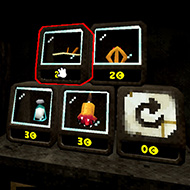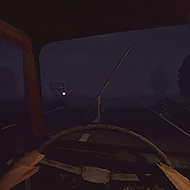Don’t Let It Starve is a survival and resource management game that tests how well players can adapt to a harsh, unpredictable environment. Every move matters, from gathering basic food supplies to crafting shelter and tools. The challenge lies in maintaining health, hunger, and energy levels as day and night cycles bring changing threats. The longer players survive, the more complex their choices become, demanding both strategy and improvisation.
Core Gameplay and Survival Systems
At the start of Don’t Let It Starve, players are dropped into a wild, isolated landscape filled with natural resources and lurking dangers. The objective is simple but unforgiving: stay alive for as many days as possible. To achieve this, players must collect food, craft tools, and manage their character’s hunger before the environment turns against them.
- Food Collection: Gather berries, hunt small animals, and learn sustainable food sources.
- Tool Crafting: Use wood, stone, and metal to build tools for cutting, digging, and cooking.
- Health Management: Avoid starvation, injuries, and disease by planning ahead.
- Day-Night Cycle: Prepare for nightfall as darkness increases danger and limits visibility.
Exploration and Resource Strategy
The world of Don’t Let It Starve is vast and randomly generated, encouraging exploration and discovery. Each biome has its own resources, creatures, and hazards. Successful players learn how to balance exploration with caution—venturing too far can bring valuable materials but also unexpected danger. Smart resource allocation is crucial to prevent shortages when the environment changes.
- Biomes and Terrain: Explore forests, deserts, and tundras for unique materials.
- Inventory Planning: Manage limited space effectively to carry essential supplies.
- Base Building: Create a safe camp for cooking, crafting, and sheltering during storms.
- Seasonal Events: Adapt to cold, heat, and rain with changing gameplay conditions.
Creatures, Threats, and Survival Tactics
Animals and mysterious beings inhabit the wilderness, each behaving differently depending on time and proximity. Some creatures can be hunted for resources, while others pose significant threats. Players must learn patterns, use stealth, and plan defenses to survive longer.
- Wildlife Behavior: Study animal movement for safe hunting or avoidance.
- Defensive Strategy: Build barriers or traps to keep dangerous creatures away.
- Energy Balance: Rest strategically to recover from hunger or exhaustion.
- Adaptation: Adjust tactics as the environment evolves with each passing day.
Don’t Let It Starve rewards patience, planning, and observation. Every resource matters, and small mistakes can lead to disaster. The game’s depth comes from how it forces players to adapt continuously to survive. It’s not about perfection—it’s about endurance, creativity, and learning from every failure until survival becomes second nature.















































































